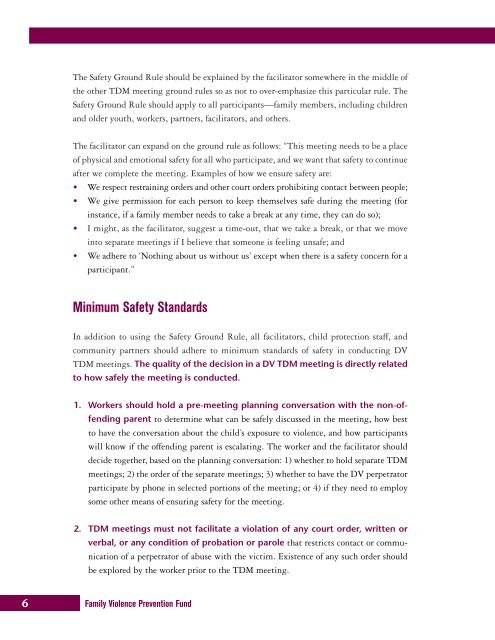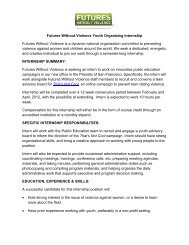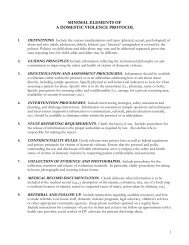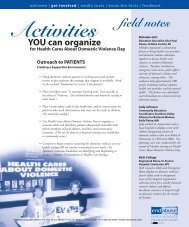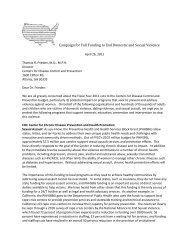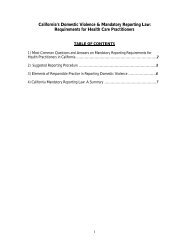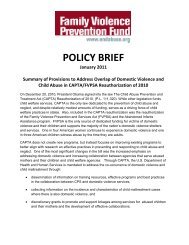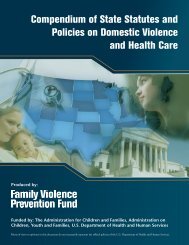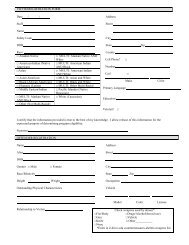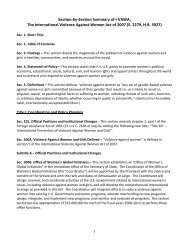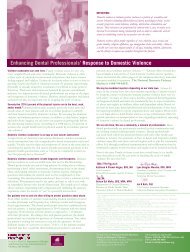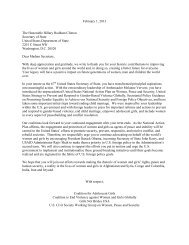Team Decisionmaking and Domestic Violence: Guidelines for ...
Team Decisionmaking and Domestic Violence: Guidelines for ...
Team Decisionmaking and Domestic Violence: Guidelines for ...
You also want an ePaper? Increase the reach of your titles
YUMPU automatically turns print PDFs into web optimized ePapers that Google loves.
The Safety Ground Rule should be explained by the facilitator somewhere in the middle of<br />
the other TDM meeting ground rules so as not to over-emphasize this particular rule. The<br />
Safety Ground Rule should apply to all participants—family members, including children<br />
<strong>and</strong> older youth, workers, partners, facilitators, <strong>and</strong> others.<br />
The facilitator can exp<strong>and</strong> on the ground rule as follows: “This meeting needs to be a place<br />
of physical <strong>and</strong> emotional safety <strong>for</strong> all who participate, <strong>and</strong> we want that safety to continue<br />
after we complete the meeting. Examples of how we ensure safety are:<br />
• We respect restraining orders <strong>and</strong> other court orders prohibiting contact between people;<br />
• We give permission <strong>for</strong> each person to keep themselves safe during the meeting (<strong>for</strong><br />
instance, if a family member needs to take a break at any time, they can do so);<br />
• I might, as the facilitator, suggest a time-out, that we take a break, or that we move<br />
into separate meetings if I believe that someone is feeling unsafe; <strong>and</strong><br />
• We adhere to ‘Nothing about us without us’ except when there is a safety concern <strong>for</strong> a<br />
participant.”<br />
Minimum Safety St<strong>and</strong>ards<br />
In addition to using the Safety Ground Rule, all facilitators, child protection staff, <strong>and</strong><br />
community partners should adhere to minimum st<strong>and</strong>ards of safety in conducting DV<br />
TDM meetings. The quality of the decision in a DV TDM meeting is directly related<br />
to how safely the meeting is conducted.<br />
1. Workers should hold a pre-meeting planning conversation with the non-offending<br />
parent to determine what can be safely discussed in the meeting, how best<br />
to have the conversation about the child’s exposure to violence, <strong>and</strong> how participants<br />
will know if the offending parent is escalating. The worker <strong>and</strong> the facilitator should<br />
decide together, based on the planning conversation: 1) whether to hold separate TDM<br />
meetings; 2) the order of the separate meetings; 3) whether to have the DV perpetrator<br />
participate by phone in selected portions of the meeting; or 4) if they need to employ<br />
some other means of ensuring safety <strong>for</strong> the meeting.<br />
2. TDM meetings must not facilitate a violation of any court order, written or<br />
verbal, or any condition of probation or parole that restricts contact or communication<br />
of a perpetrator of abuse with the victim. Existence of any such order should<br />
be explored by the worker prior to the TDM meeting.<br />
6 Family <strong>Violence</strong> Prevention Fund


